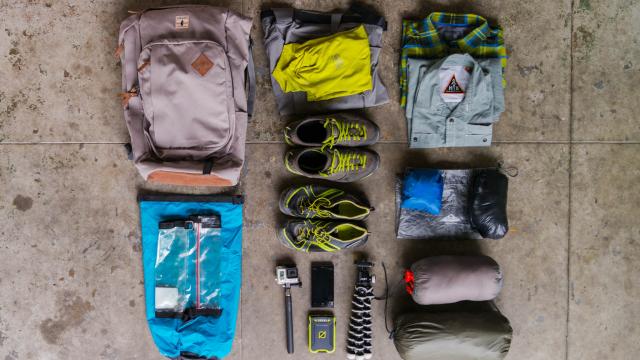What clothes, gadgets, and backpack does a photographer and writer for an adventure travel site rely on when he’s going to Asia and travelling light? This is my pared down adventure-storytelling kit, and how it performed.
I spent nearly eight months adventuring around the globe. The second half of my trip took place in Nepal during the winter (cold and snowy in the mountains) and in Thailand, Cambodia, and Vietnam, which was hot and humid.
I trekked through the snow, rode motorcycles, chased waterfalls, and explored caves. This gear kept me warm, cool, and dry; allowed me to share stories of adventure along the way.
Outdoor Gear
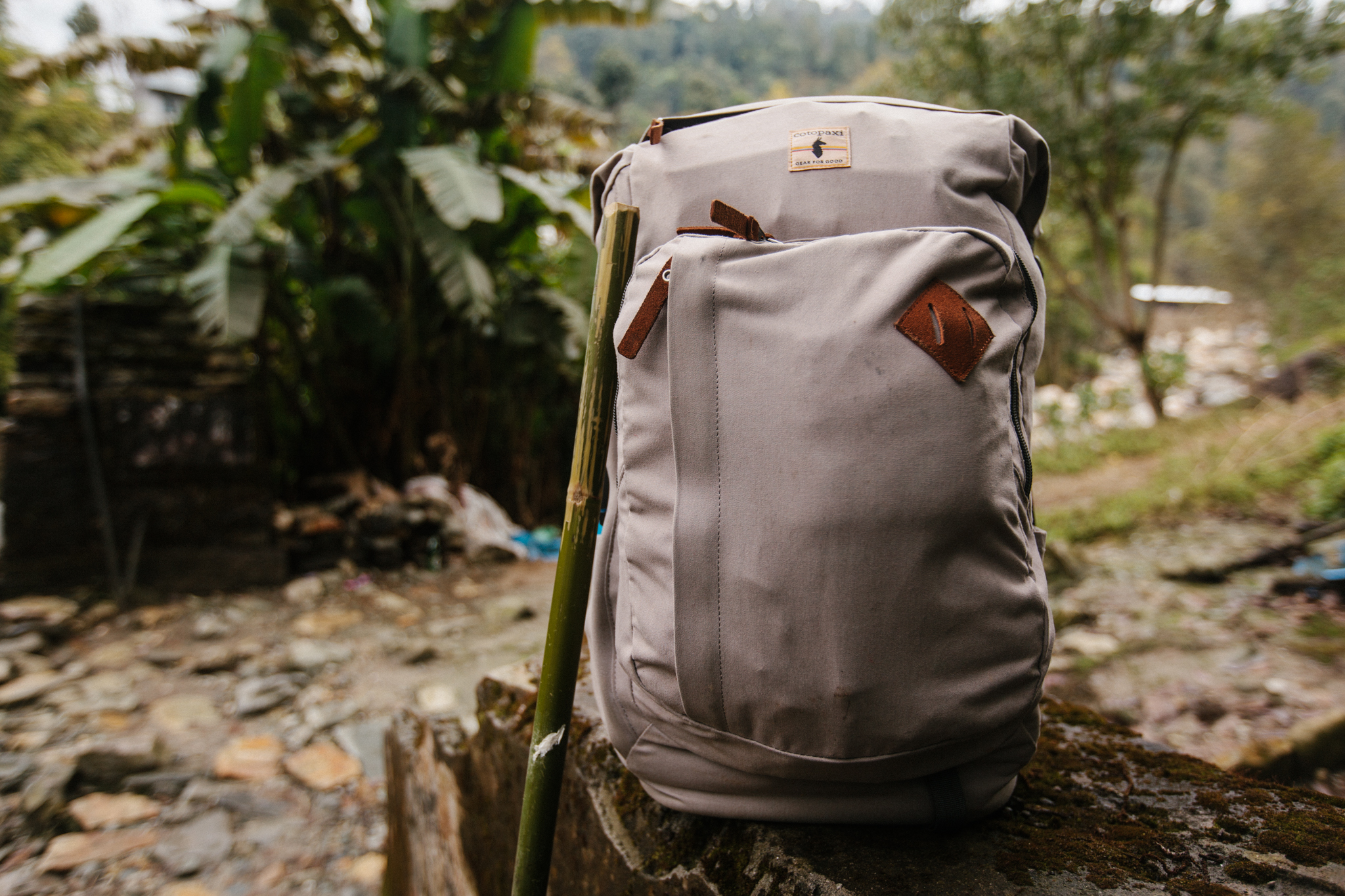
Cotopaxi Volta 35L ($US109)
The Volta 35L is a versatile pack that’s well-suited for adventure travel. It’s durable, has a rain resistant finish, and is plenty large enough for minimalist overnight adventures. It also features a zippered external laptop sleeve, side-access main pocket, and a secondary pocket with lots of organizational sleeves. Those features, combined with its casual styling, makes it equally at home in the airport and on the trail.
The Volta performed great during my time in Southeast Asia, where the prevalence of accessible and inexpensive guesthouses made it unnecessary to carry a full overnight camping kit. However, it was still (barely) large enough to carry everything I needed while teahouse trekking through Nepal in the dead of winter. Once I dropped my winter gear in Thailand, space became even less of an issue.
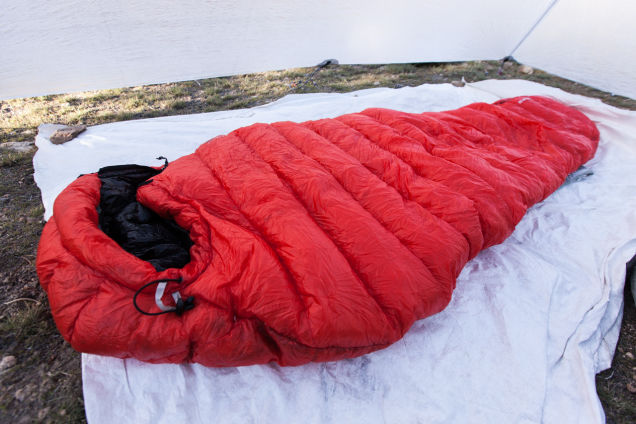
Mountain Hardwear Mtn.Speed 32 ($US480)
Weighing in at less than a pound and packing into a 1.5L stuff sack, the Mtn.Speed 32 is one of (if not) the lightest and most compact 32-degree sleeping bags available. In order to achieve its incredible light weight and compact size, Mountain Hardwear stuffed 850-fill hydrophobic down into a shell made entirely from their proprietary Ghost Whisperer fabric, which is a tightly-woven, windproof, and water-resistant nylon. The fabric is so advanced that only one mill in the world can weave it.
The Mtn.Speed’s size and weight sound impressive on paper, but they’re even more impressive in use; it allowed me to size down to the 35L Volta during my during my dead-of-winter treks in Nepal, instead of carrying a significantly larger pack.
Sleeping bag temperature performance is very subjective due to ever-changing environmental factors and user variables. That being said, the coldest temperature I experienced on either of my winter treks was about 23 degrees Fahrenheit, in a lodge at 13,000′. The bag’s lower limit (the comfort rating for a male) is 32 degrees. To compensate for the lower temperatures that were experienced, I wore base layers, a down jacket, socks, gloves, and a hat to bed. I didn’t get cold.
With the exception of a hefty price tag, the Mtn.Speed’s only downfall was its zipper — a half-length #3 YKK, which was tricky to operate and often got caught. It was a frustrating oversight on an otherwise perfect sleeping bag.
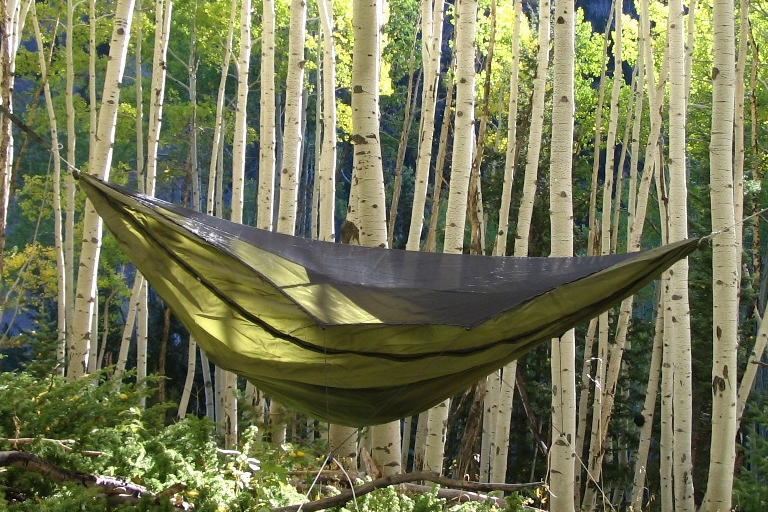
Photo: Warbonnet
Warbonnet Blackbird Hammock ($US185)
With a built-in shelving system and bug protection, the double-layer Warbonnet Blackbird is a hammock camper’s dream. It’s two-layer canopy design keep sleeping pads from slipping around; it’s asymmetrical shape provide a very comfortable sleeping position. Hanging straps are built-in and can be customised to order. At 1 pound, 11 ounces, it’s a bit heavy for a hammock, but its extra features are worth the weight.
I put it to use while wild-camping on the untainted beaches of Koh Rong Island in Cambodia, but admittedly, I found few uses for it beyond there. That was largely due to the high population of the areas I travelled in and the inaccessibility of wilderness. Cheap accommodations were plentiful; I was presented with few opportunities to camp. Next time I’d just buy a cheap hammock on the island and leave my own behind.
Electronics
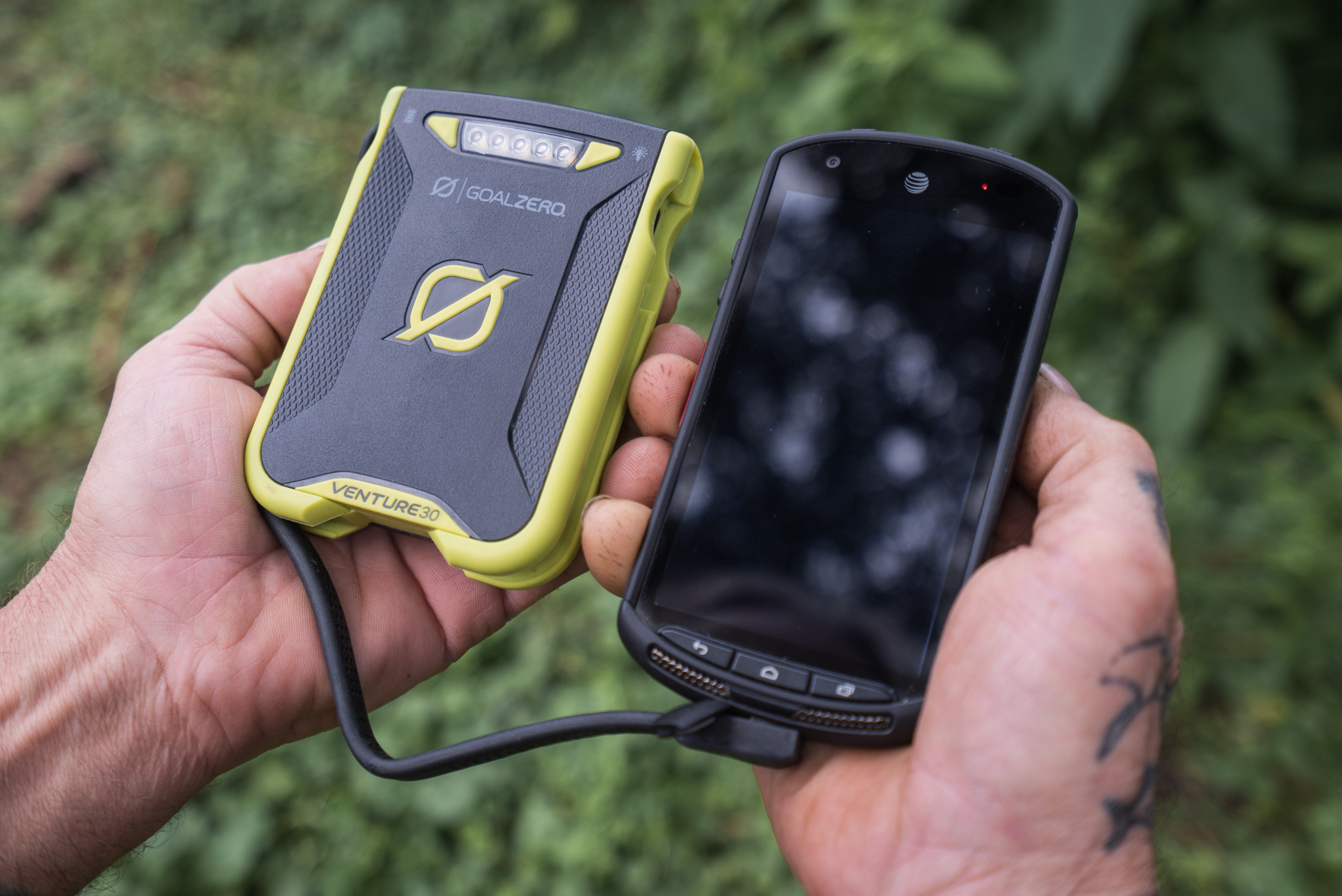
GoalZero Venture 30 Recharger ($US100)
The Venture 30 Recharger is the latest portable power device from the company that’s harnessing the sun. At 7800mAh, it stores enough juice to fully charge a smartphone two to three times, or a GoPro up to five.
Built for adventure, the Venture 30’s ruggedised design is rated IPX6; its innovative ports don’t have to be plugged to remain waterproof. The unit features two full-sized USB ports and one mini USB port; three devices can be charged simultaneously. The Venture also has a built-in USB cable so you don’t have to carry an extra one around. Blue LEDs indicate charge status and they double as a flashlight.
The Venture recharges via USB in five hours, or from a Nomad 14 solar panel in six to twelve. Actual use allowed me to recharge my Kyocera DuraForce ruggedised smartphone twice without connecting to the wall or sun.
At just under 9 oz and a little bigger than a smartphone with a bulky case, the Venture was light and compact enough to fit in the same jacket pocket as my phone while riding motorcycles through Vietnam. The built-in cable was ingenious; I really loved using it.
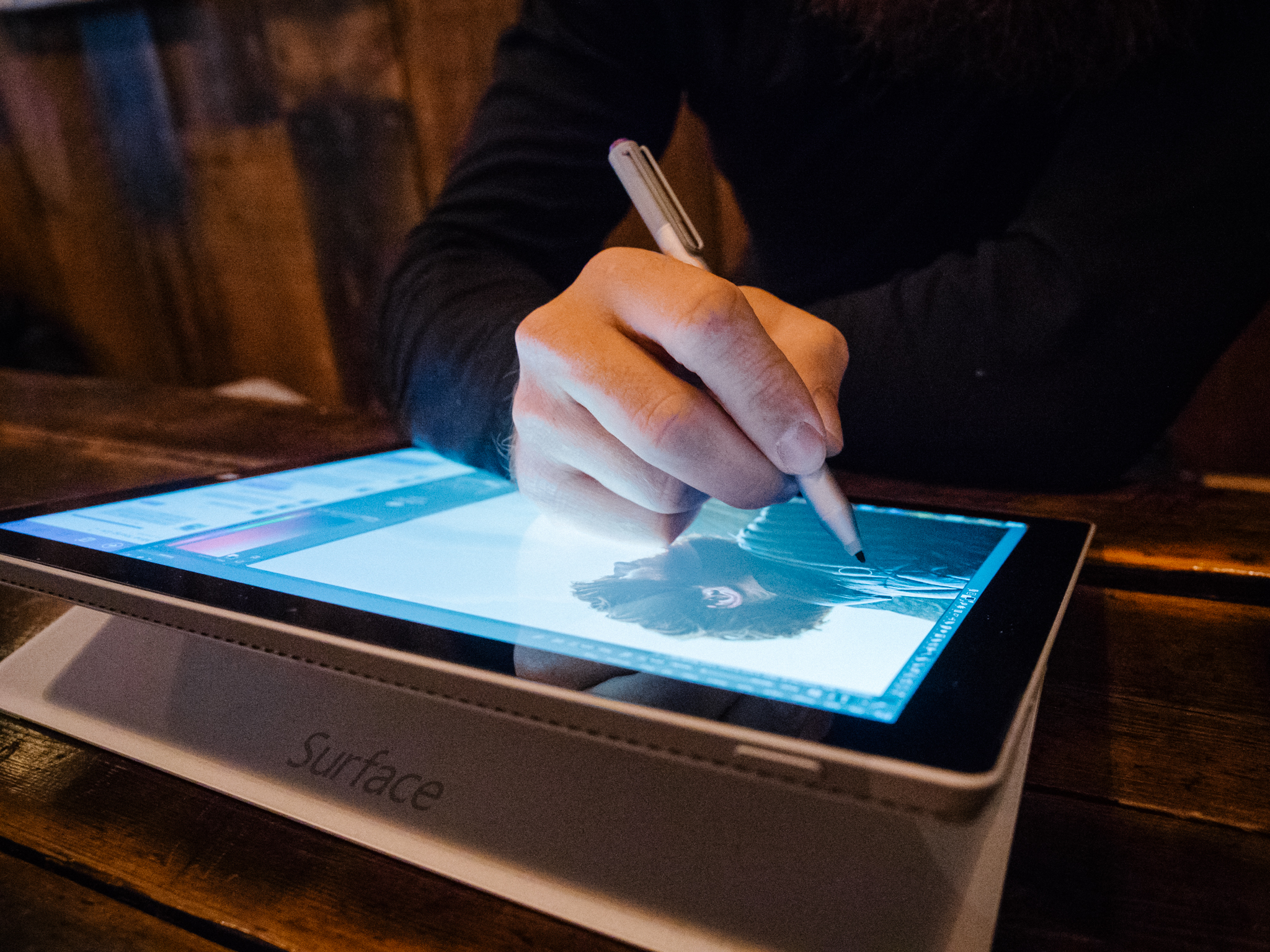
Photo: Daniel Bruce Lee
Surface Pro 3 w/Type Cover (Starting at $US799; as configured $US1,929)
The Surface Pro 3‘s touch capabilities and pressure-sensitive stylus have allowed me to edit and retouch photos, as well as write from the field. It’s powerful and portable; there’s not a better computer out there for what I’ve been doing.
Canon 5D Mk II + Canon 16-35mm f/2.8L USM II
I lugged this big, heavy, full-frame SLR around on my neck everywhere I went. I thought that until I lost it in Vietnam. Read about why I shot with the 5D here.
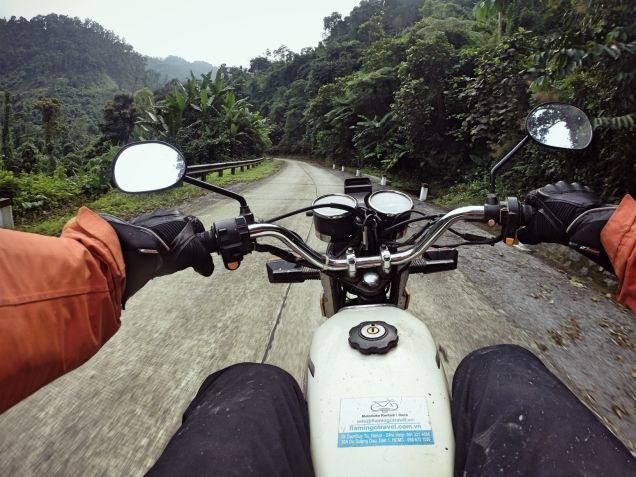
The GoPro Chesty accessory provides for a hands-free, first-person perspective.
GoPro Hero 3+ Black Edition ($US399)
While I wasn’t using GoPro’s latest version, when I lost my gear, this tiny camera came to the rescue. I shot the entire tour of Hang En Cave using it, which was really challenging given the lighting conditions. Pretty impressive for such a tiny package.
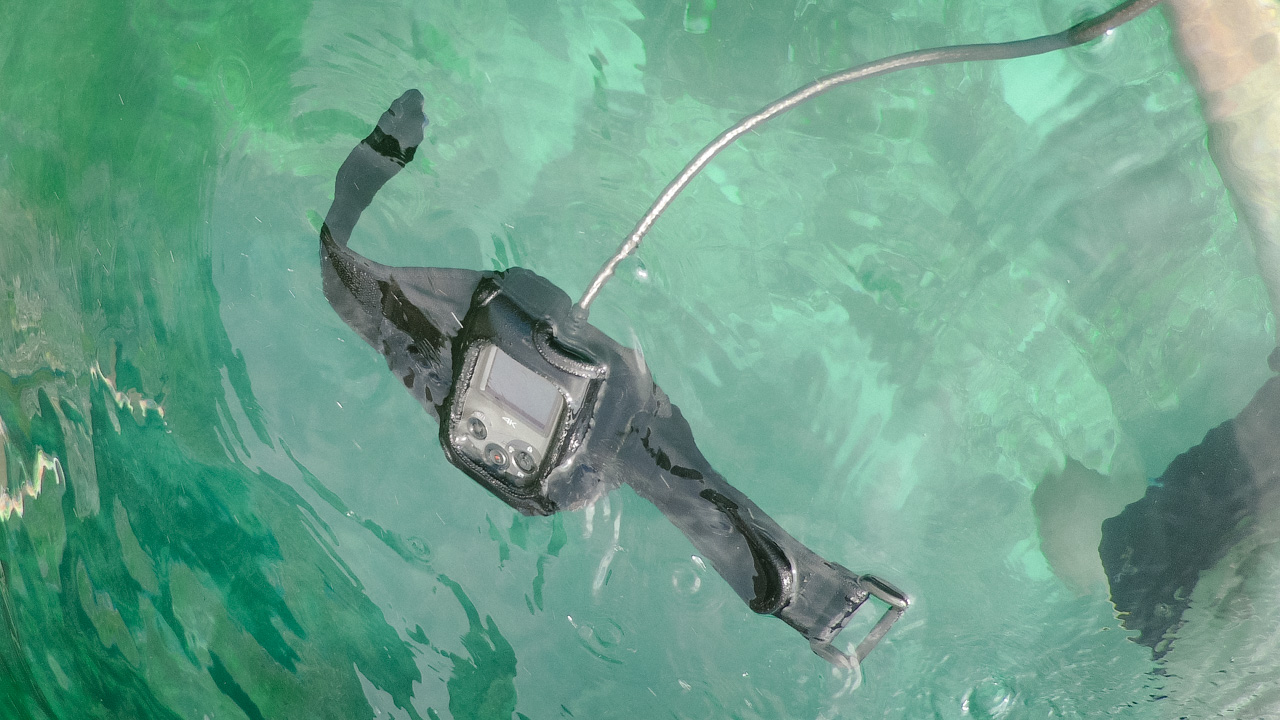
Panasonic HX-A500 ($US399)
The Panasonic HX-A500 separates itself from other action cameras. The lens is connected to the rest of its body via a fibre optic cable. This unique format allows for some interesting perspectives that would be harder to achieve with a bulkier all-in-one system (like mounting the lens to the blade of an ice skate, or to the end of a pole-fishing spear.)
With its waterproof design, built-in 3″ LCD screen, and powerful recording formats (4k @ 30p, 1080p @ 60p), the HX-A500 is squarely aimed at the competition, but Panasonic has an uphill battle. Mounting accessories like the floating arm-band are well thought-out, but are few in comparison to the reigning king of action cameras.
While the HX-A500 was fun to use, I can’t recommend it over the current GoPro Hero, though it made for a great secondary camera capable of capturing some unique shots.
LaCie Rugged Mini 2TB ($US160)
I made dual, redundant backups of every single photo and video that I shot on my trip, amounting to 1.5 TB of data after seven months. The LaCie Rugged Minis are rain resistant, can survive drops from 1.2 meters, and can even be run over with a 1-ton car, but that doesn’t do any good if you lose them. Back your stuff up on the cloud.
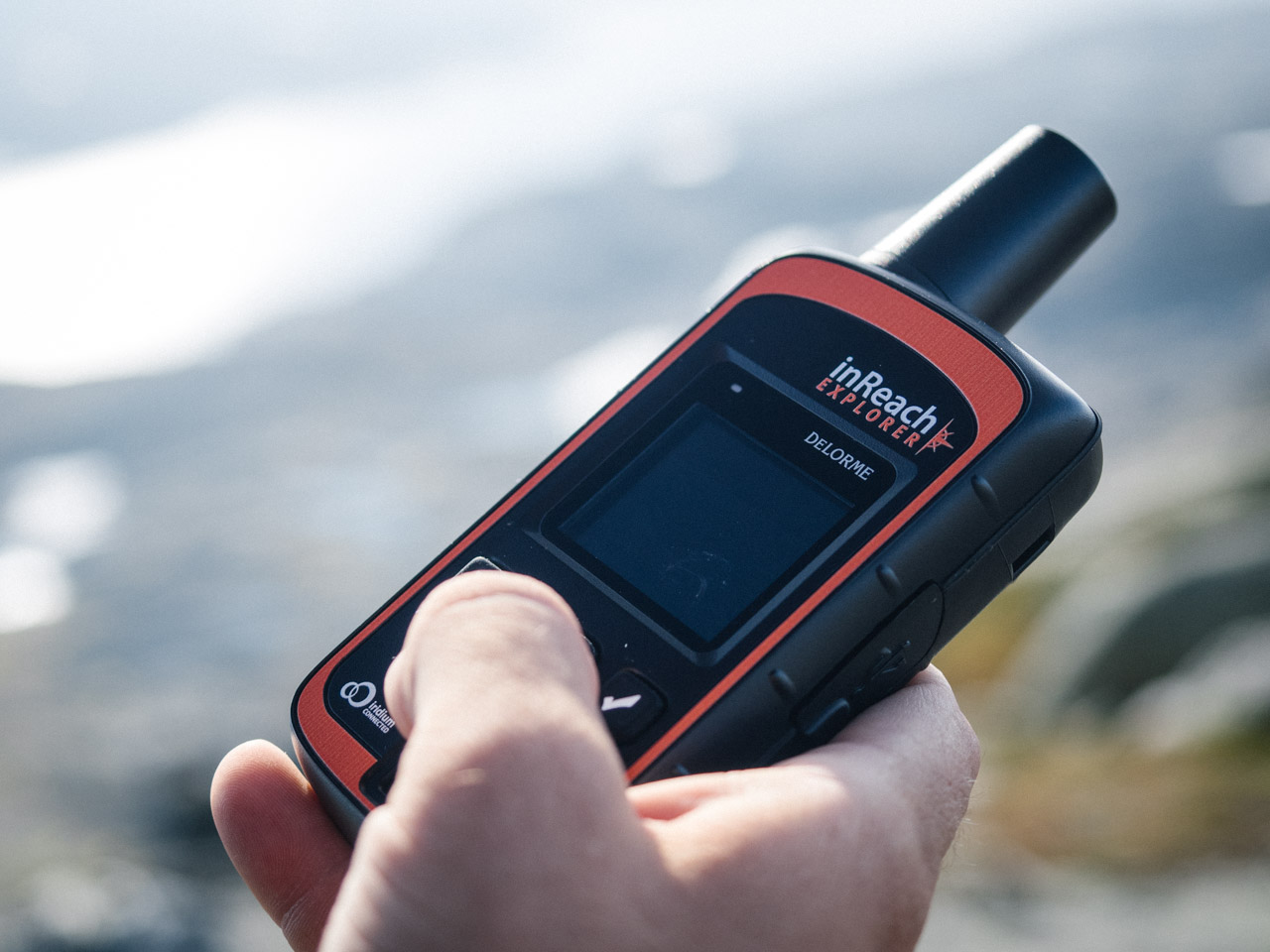
Photo: Daniel Bruce Lee
GPS: InReach Explorer ($US330 + Subscription)
The InReach Explorer is a two-way satellite communicator that also functions as a GPS navigator. Or maybe it’s the other way around. It allows users to track their mileage, speed, elevation, and location. Users can also text friends and family, or send status updates to Facebook and Twitter from the device. Each status or message is integrated with MapShare, a GPS tracking service. MapShare allows others to follow along with your journey in real-time. When it all goes wrong, there’s a one-touch SOS button that’s ready to bring in the cavalry (potentially in the form of a helicopter).
The interface is rudimentary (think Motorola RAZR-era phones,) there’s no physical keyboard (instead, one must rely on a D-pad and virtual keyboard to type messages,) and the screen is small. Battery life is great, however; I could run the GPS interval tracking for days on-end without recharging (by USB). The Explorer’s shortfalls can be overcome by pairing it with your smart phone, but there’s no Windows Phone app; I didn’t like the idea of draining two batteries at once to unleash its potential.
The countries I visited in Southeast Asia had pretty robust (and inexpensive) cellular networks; I was rarely out of service. As such, I didn’t ever have to rely on the InReach, though it was definitely useful while adventuring in Nepal.
Clothing & Footwear
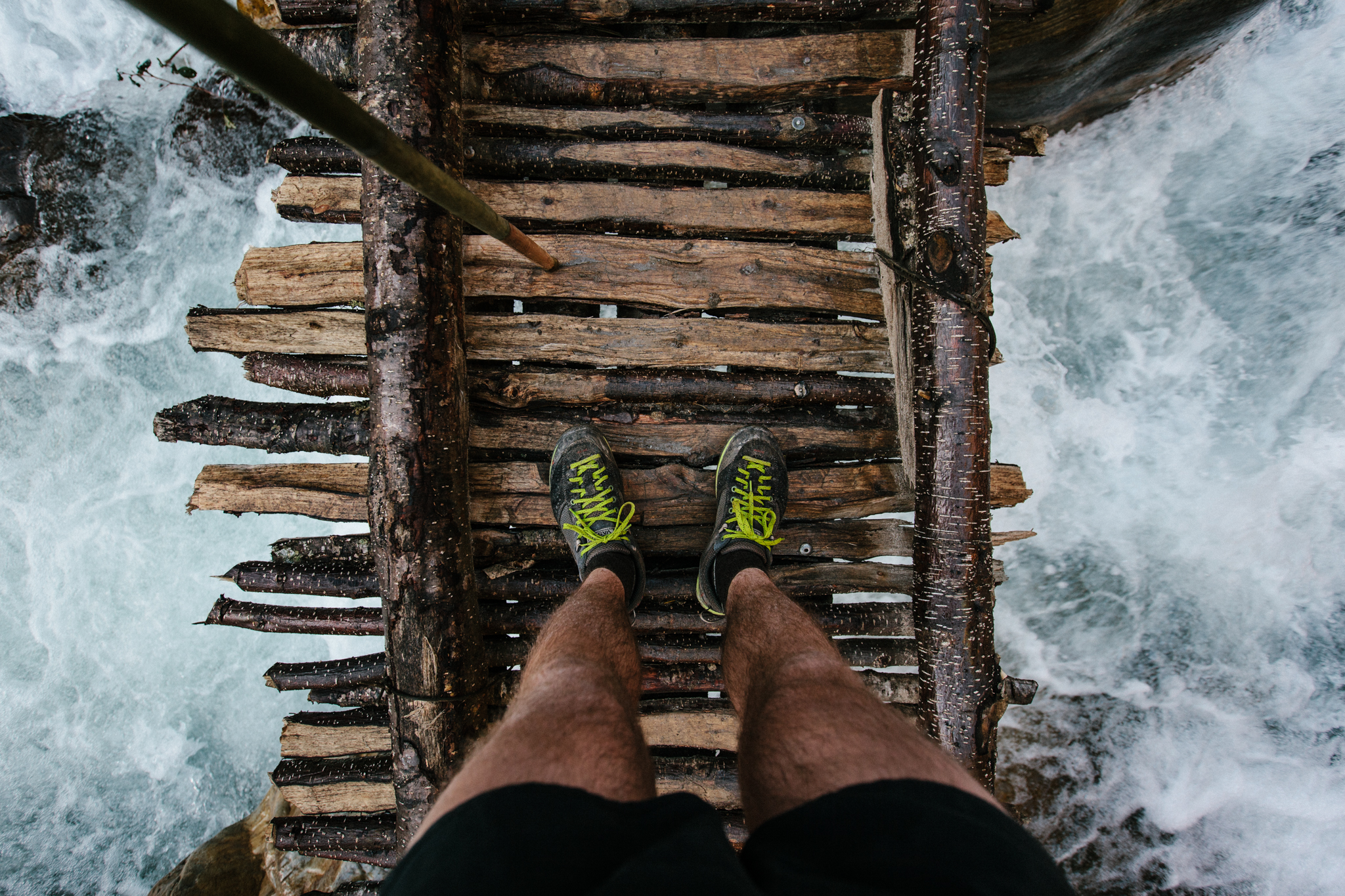
Vasque Grand Traverse ($US120)
The Vasque Grand Traverse were my go-to shoes for this trip. They are technically an approach shoe; as such, they provided plenty of support, while Vibram outsoles provided solid traction on the trail. I wore them while hiking in nearly every type of condition: dirt, mud, snow, asphalt, and ice; they could handle it all. The best part? They didn’t look totally obnoxious while walking around town.
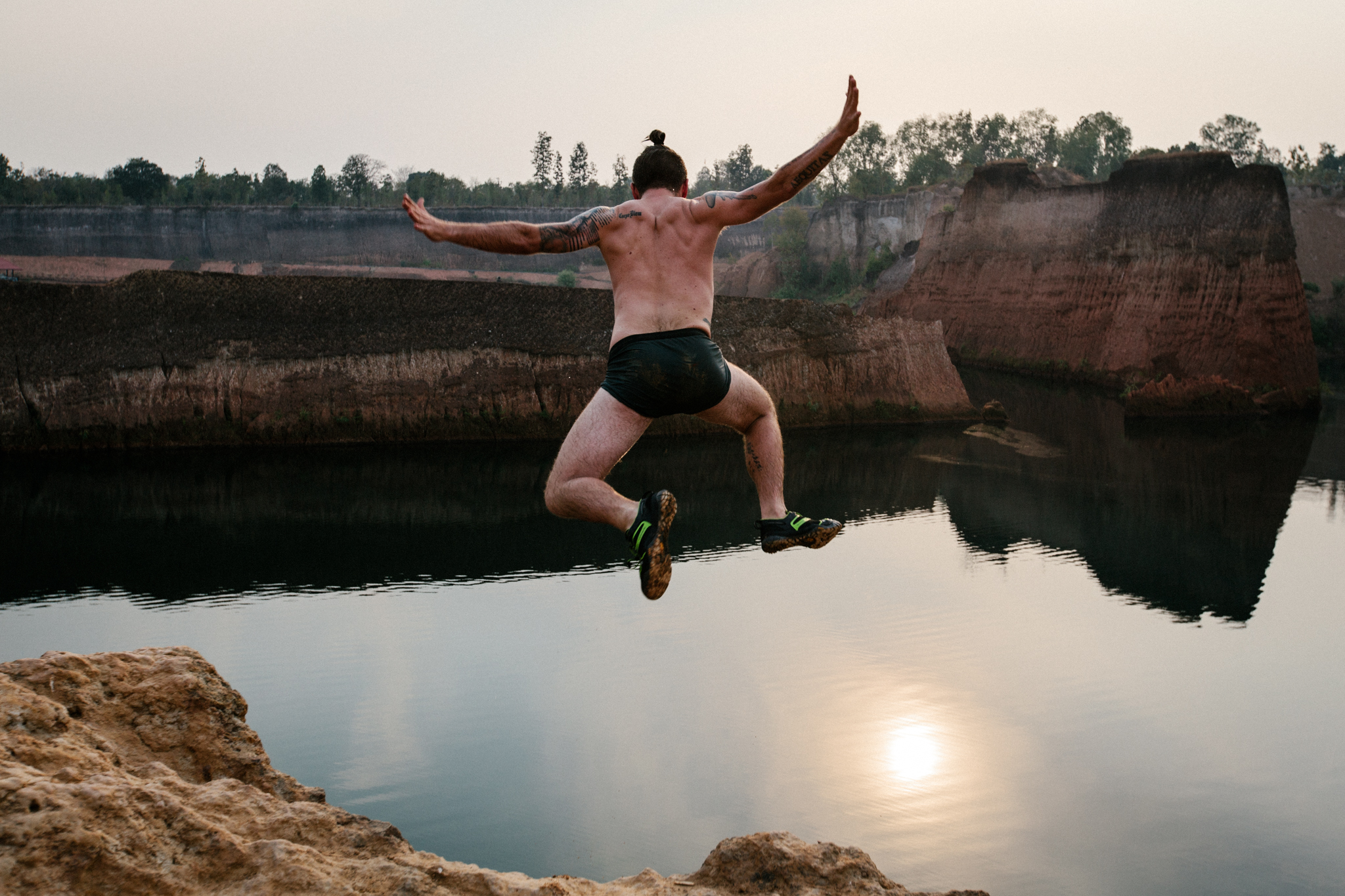
Vasque Lotic ($US60)
The Vasque Lotic are an amphibious shoe; they were perfect for exploring the many waterfalls, rivers, and pools encountered in Southeast Asia. Drain holes allowed for water to quickly purge during surface transitions; the materials dried quickly once outside of the water. Grippy Vibram soles provided lots of traction and protection from sharp or slick rocks; a quick lace system made them easy to take on and off.
They worked incredibly well for what they were designed for, but were not as supportive or as durable as a dedicated hiking shoe, so that’s why I didn’t wear them all the time. That being said, whenever I put them on, adventure ensued.
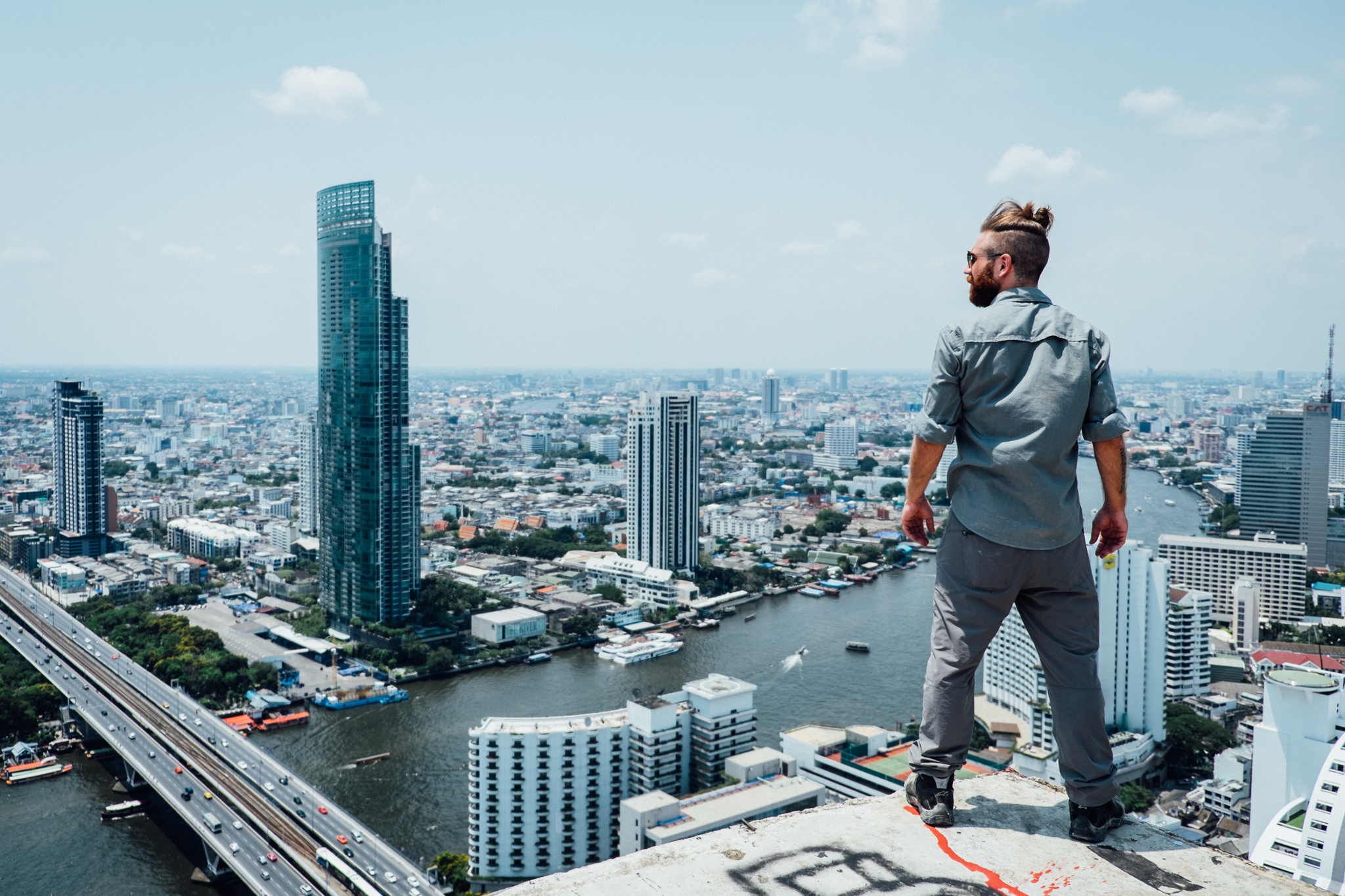
Huckberry Travel Shirt ($US80)
Huckberry’s Travel Shirt uses a cotton/poly blend; has lots of upper vents on the back and shoulders which helped keep me cool while it was hot out, but during times where I still needed sun protection. A built-in microfiber cloth pocket ensured that I could always clean my camera lens.
Outdoor Research Ferrosi Pants ($US80)
The Outdoor Research Ferrosi are lightweight, softshell hiking and climbing pants that feature a casual cut, similar to what you’d find with a pair of jeans. A zippered thigh pocket was the perfect size for carrying my passport; elastic drawstring cuffs allowed me to hike up the legs whenever it got too hot.
The pants’ material was really stretchy; easy to move in. They offered great protection from the wind and were water resistant as well. The casual cut looked great around town. I just wish that they came in a 28″ — 30 would fit, but without a belt they got kind of baggy around my waist.
Mountain Hardwear WickedCool T ($US55)
An innovative take on the classic moisture-wicking tee, the WickedCool T places hundreds of little circles next to the skin, which are designed to actively cool. Marketing hype or not, they seemed to work, even in the jungle during Vietnam’s summer.
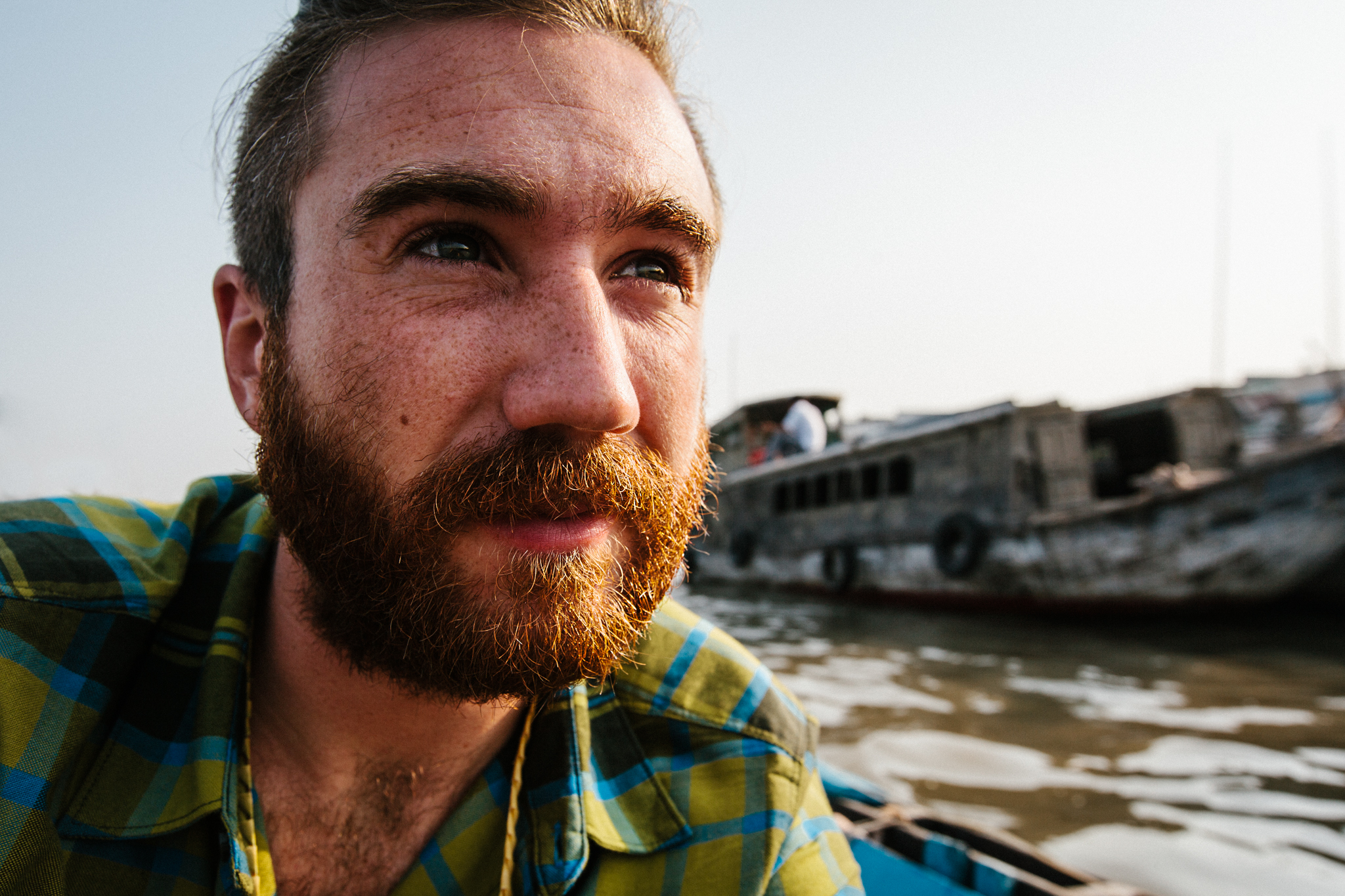
Mountain Hardwear Drummond Shirt ($US65)
The Drummond is a short-sleeve woven travel shirt. It features a hidden zippered chest pocket for an added layer of security while travelling. The pattern and colours were great, but the cut was a bit too boxy for my athletic figure. Inexplicably for a technical performance wear brand, much of MHW’s stuff is cut for fatties.

Myles Apparel Everyday Short ($US58)
The Everyday Short is made from a four-way stretch nylon and spandex blend, so they move when you do. They feature a DWR (Durable Water Repellent) finish, so water just beads off. Large mesh pockets add some function; the materials work together to dry quickly after a swim. I just wish that they had a internal security pocket for items like keys, cards, or cash.
Outdoor Research Helium II ($US150)
The Outdoor Research Helium II is a lightweight, full-featured, 2.5 layer rain jacket that clocks in at just 6.4 oz. It features a zippered chest pocket, elastic drawcord for the waist, and packs down to the size of a small apple. While it provides full protection during rain, the hood kind of sucks and it’s one of the least-breathable hardshells on the market, meaning you sweat in it.

Mountain Hardwear Ghost Whisperer Down Jacket ($US320)
Why would you carry a down jacket throughout Southeast Asia during the summer? Well, there are lots of mountains in Southeast Asia; they can still get pretty chilly, especially at night.
Lightweight, packable, and incredibly warm, the Ghost Whisperer Down Jacket is just so easy to take with you, that it’s hard to leave at home. Mountain Hardwear stuffed 800-fill hydrophobic down into a shell made from their Ghost Whisperer fabric (the same stuff used in the Mtn.Speed sleeping bag) so it’s windproof, water resistant, and only weighs 7 oz. It features an elastic drawstring around the waist and two zippered handwarmer pockets — one of which it packs down into. I carried it (and continue to carry it) absolutely everywhere.
Again, this MHW jacket is cut for Santa-esque bodies. Wes had his tailored; $US20 was all it took to make it fit right.
MISC
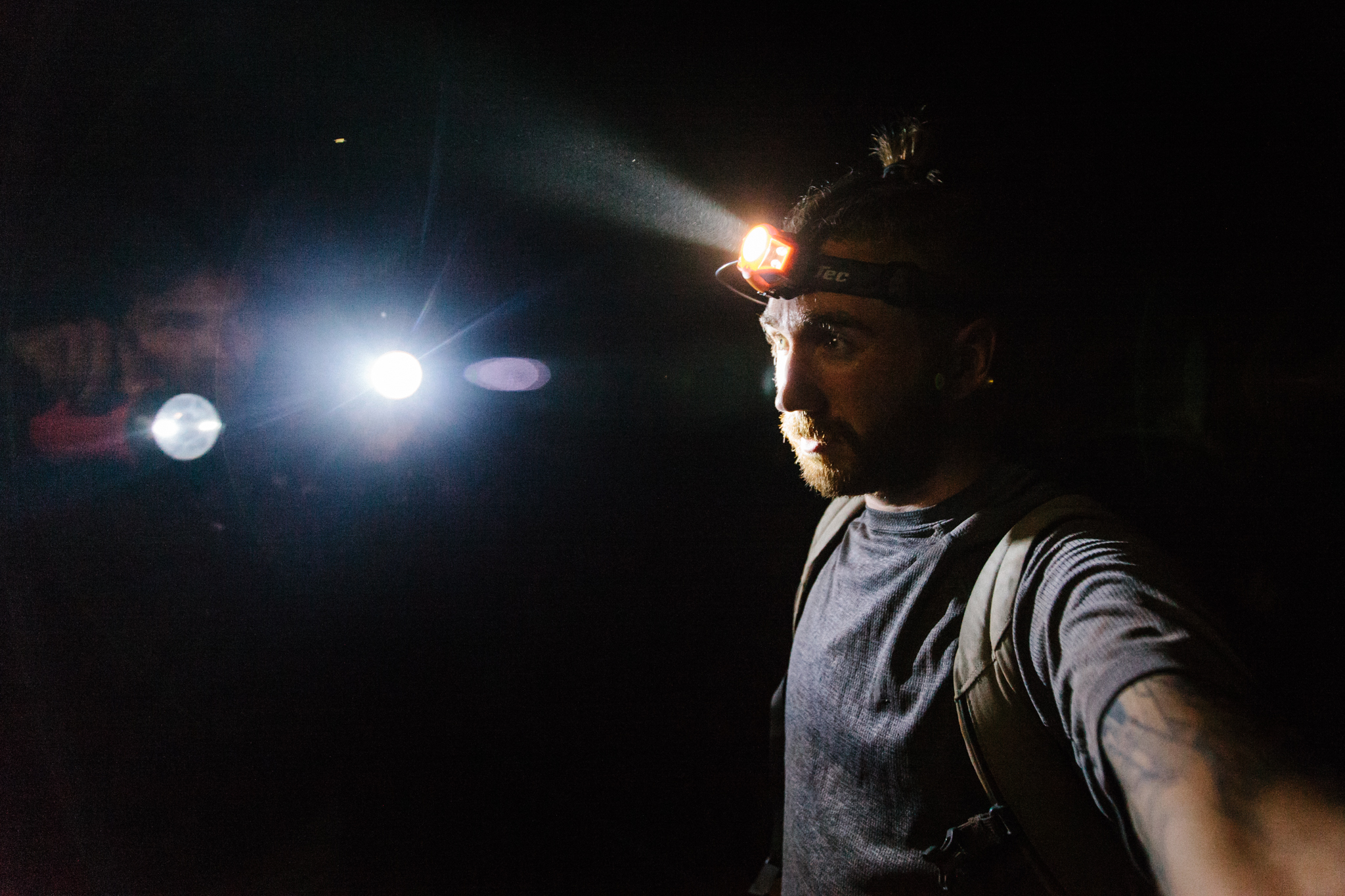
PrincetonTec Apex Headlamp ($US90)
At nearly 10 oz, the PrincetonTec Apex Headlamp is not light, but with up to 275 lumens, it’s bright. At its maximum setting, the Apex has a range of over 120m. With a more conservative brightness, the wide beam will reach more than 24m; have 14 hours constant burn-time (with 150 hours total using a set of 4 AA batteries.) The Apex boasts an IPX7 rating, meaning it can be submerged up to a meter for 30 minutes.
The Apex’s brightness and IPX7 rating make it an ideal headlamp for exploring the many caves located throughout Thailand, Cambodia, and Vietnam. There’s also a rechargeable version.
SealLine Nimbus Drybag ($US20)
When adventuring with sensitive electronic equipment, it’s always a good idea to keep a couple of dry bags handy – especially if you’re going to be spending time around water, or in an area known for its precipitation.
The SealLine Nimbus drybags are lightweight and durable; the 5L is large enough to hold a full-sized SLR with a normal zoom lens and a couple of smaller electronics as well (like a phone). Double-bag ’em if there’s a possibility of submersion.
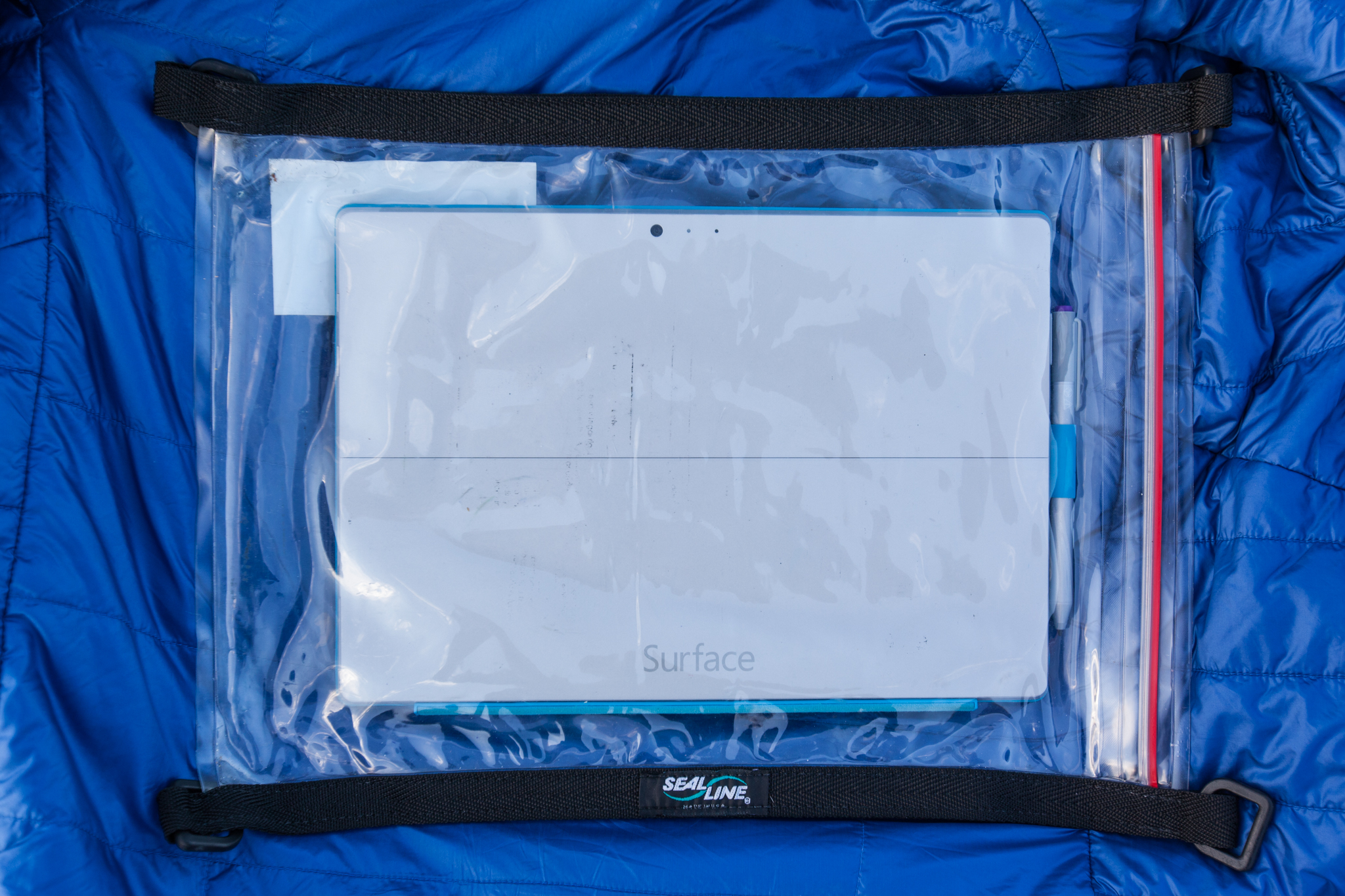
SealLine HP Map Case ($US30)
The best way I’ve found to protect my computer from water while adventure travelling is by keeping it in a waterproof map case. The SealLine HP map case is made from polyurethane. It’s lightweight, durable, and has a secure rolltop Velcro closure.
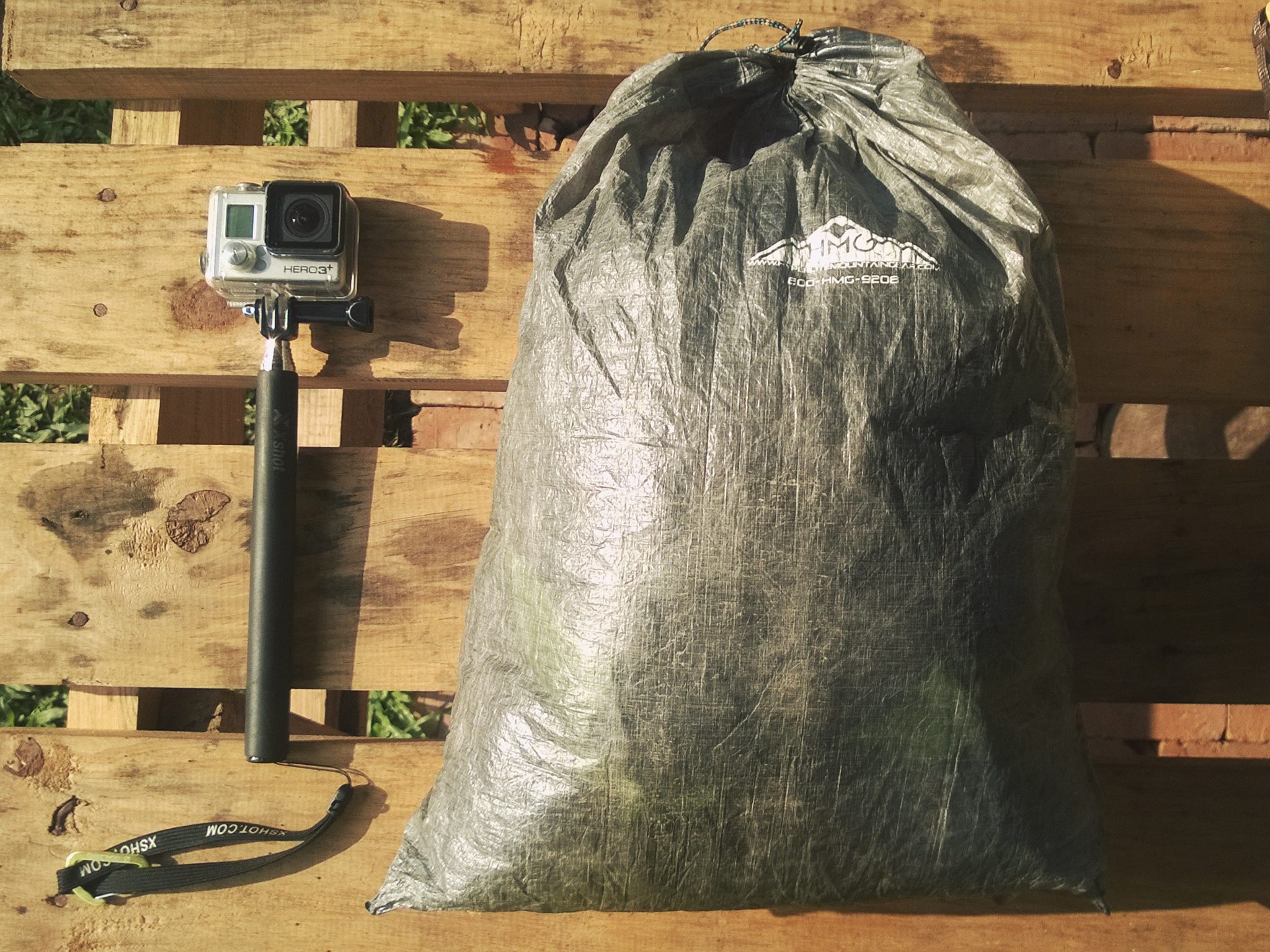
Hyperlite Mountain Gear Cuben Fibre Stuff Sack ($US30)
HMG’s Cuben Fibre stuff sacks are durable, incredibly lightweight, and fully waterproof. I kept my clothes and down jacket in one in case the sky ever fell out.
Joby SLR GorillaPod w/Ball Head ($US45)
The Joby SLR GorillaPod is a lightweight, portable, and versatile tripod that’s robust enough to support a full-frame dSLR and medium zoom lens. It can be configured to rest on a variety of uneven surfaces (rocks, tree branches, sand.)
It can be kind of a pain in the arse to use; it’s not incredibly stable (I wouldn’t leave my camera on it during a wind storm) but there aren’t really any other options that are as inexpensive, light, and compact.

XShot Pro Selfie Stick ($US30)
The XShot 2.0 was handy for capturing unique action perspectives, especially while travelling alone. It was lightweight, and compact enough to fit in my jacket pocket with the GoPro attached. It wasn’t waterproof, however; water was everywhere. Mine got a little rusty.
About the Author:Chris Brinlee Jr.is an adventurer and storyteller who recently finished a seven and a half month journey around the world. Follow his adventures on Instagram:@chrisbrinleejr. Check out his travel book on Blurb.
Pictures: Chris Brinlee, Jr. unless otherwise noted.
